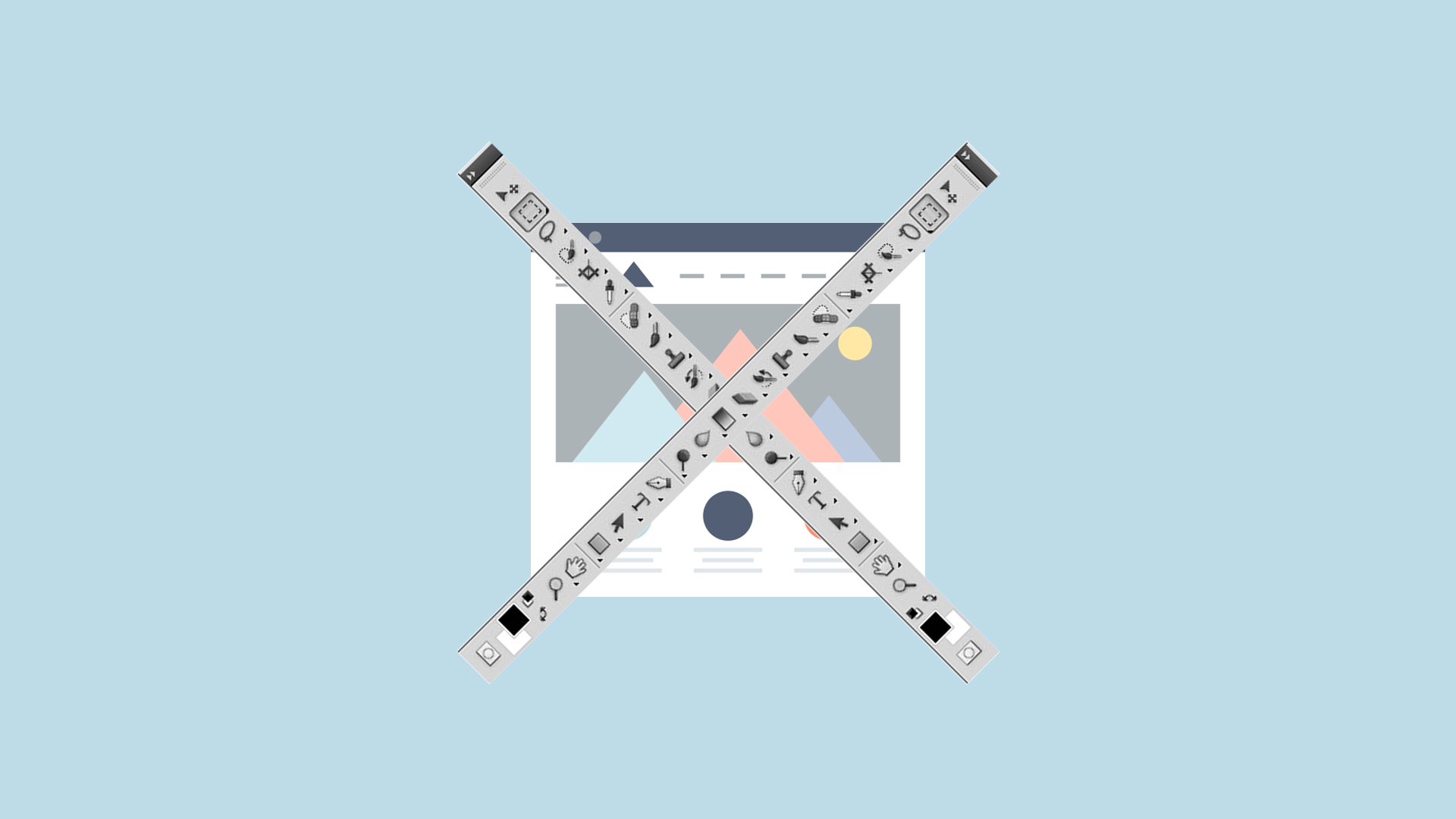Do Design Tools Limit Designers?
Let’s talk about the chicken and the egg for a minute.
For centuries, this question of which came first has kept us all up at night staring at the stars, looking for answers.
Okay, that’s a little dramatic, but it’s a great segue in the same spirit as what I want to talk about – graphic design. And even more specifically, the education of graphic designers.
The standard tools of modern design.
Most designers today have a defined set of tools. You could safely assume that the majority are well-versed in Photoshop, Illustrator, and Indesign, and maybe Sketch if they’re fancy. Even non-designers are familiar with a lot of the functions of these tools, and assume professional designers know how to use them.
This is a great time to admit that I have never used Adobe Indesign in my entire career, but let’s keep going.
Schools around the world teach these design tools to their students, and the outcome for all of them is the same – static page layouts, that is, layouts designed with traditional print in mind.
These tools ultimately produce the same thing, rectangles. Really beautiful rectangles, but rectangles none the less.
Designers are using tools to layout websites, but not creating the websites themselves.
If you want your static design to become something more functional in today’s world – like let’s say a website – that’s a different set of skills all together. Typically – and our own agency included – the designer hands their static design files to a web developer to interpret and code them into an actual, functioning website.
I would say this is a common practice in most creative agencies – although I am aware of some who operate differently, or have a different focus.
Is design software dictating the work designers produce?
Okay, now let’s break down the big idea.
Design is thinking made visual. It is form and content applied to a medium. It is the rectangle output itself, but at the same time it is the formless thought and ideas that informs what the rectangle becomes. Design is both a noun and a verb. Deep stuff.
Design happens in the form of rectangles because the tools we use to produce it are built to create static rectangles.
At this time I would like to point out that I have nothing against rectangles or any other shape.
It’s the chicken or the egg. Are the tools we use built to help us design, or are they dictating the outcomes of our creativity?
What if we had learned different tools?
A few years ago (about 20 – yikes!), I had a corporate office job at a very conservative company. Our Windows computers were locked down and secure. All the unnecessary had been removed. The computers had web browsers, but none of them were allowed to access the internet. Also, and probably worst of all, the Solitaire game was removed.
The one piece of software that they didn’t take away from the computer turned out to be one of the greatest design tools I’ve ever learned: Notepad.
Notepad is a text editor. You can type in it. That’s it. Think about it like a super stripped down version of Microsoft Word.
I would open Notepad, type a few lines of html code, save it, and then drag it into my offline web browser, and, wham! I would have a webpage. It was a really basic webpage, but a webpage nonetheless.
You know what? Even though It was limited, the constraints of the situation became a challenge. How can I make this good? How can I code this next part? How can I make my own damn version of Solitaire? Ha.
But as a creative person, I had learned a new set of tools to make my ideas happen. I would save all of my html files in a folder on the desktop named “Atomicdust,” but that’s a story for a different day.
Knowing and understanding this new tool (html) let me think about design solutions differently, and gave me a huge advantage toward making my ideas happen.
Design past your comfort zone
When designers are exposed to new tools, they use them to create. But sometimes, it is scary to drift away from your comfort zone. Adobe does a fantastic job of creating exciting new design apps that I (and most people I know) will never see the need to open.
It’s not the toolmakers fault. It’s the comfort of the builder. A lot of designers refuse to see past the limits of the static rectangle, when they should be wondering what they could do with a brand new set of tools.
If you’re interested in checking out new tools for designers, we’re hosting a Meetup with the Webflow team at our office on Sept 23rd. Here are more details.
Let’s stay connected!
Subscribe to our newsletter for all the latest news, events and monthly marketing tips from our team.


